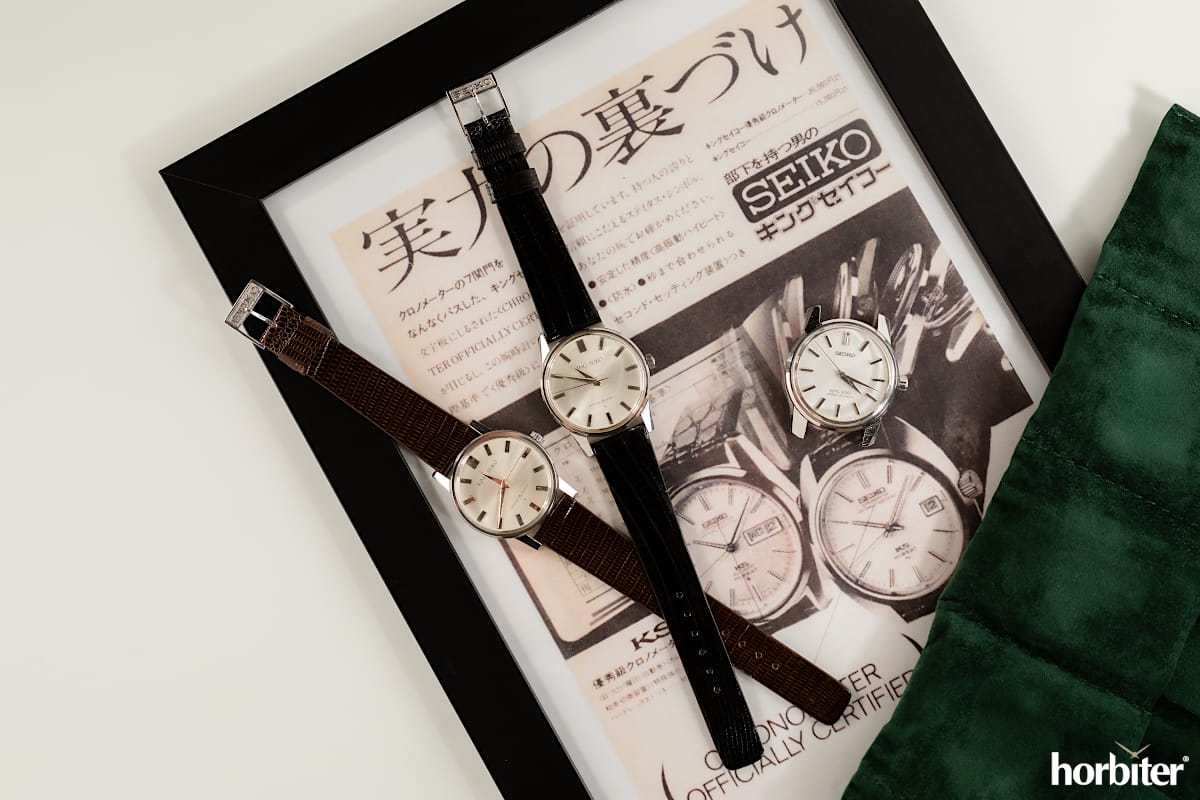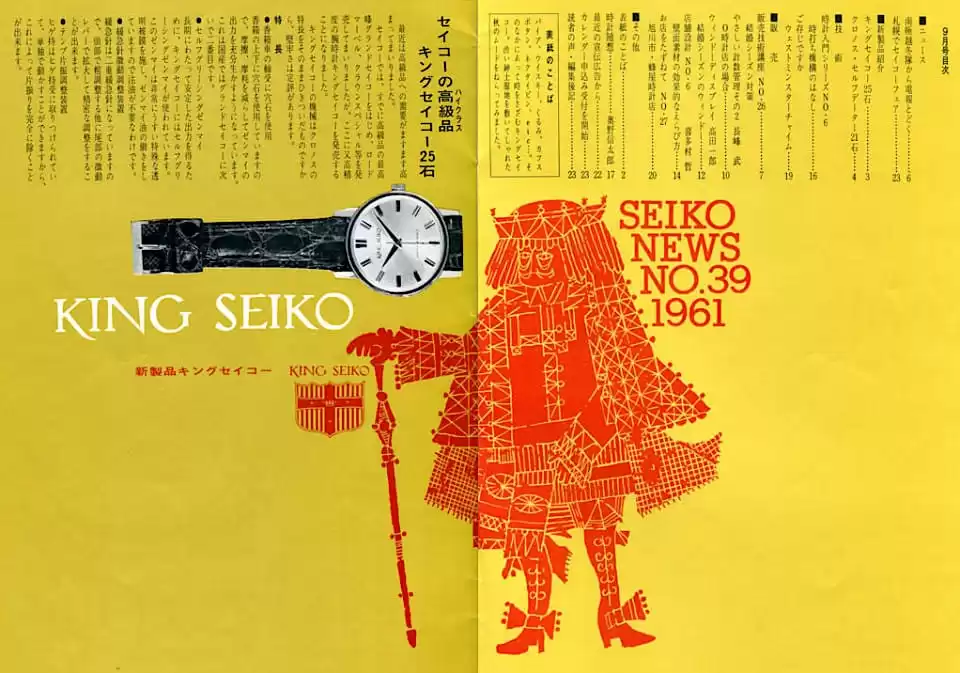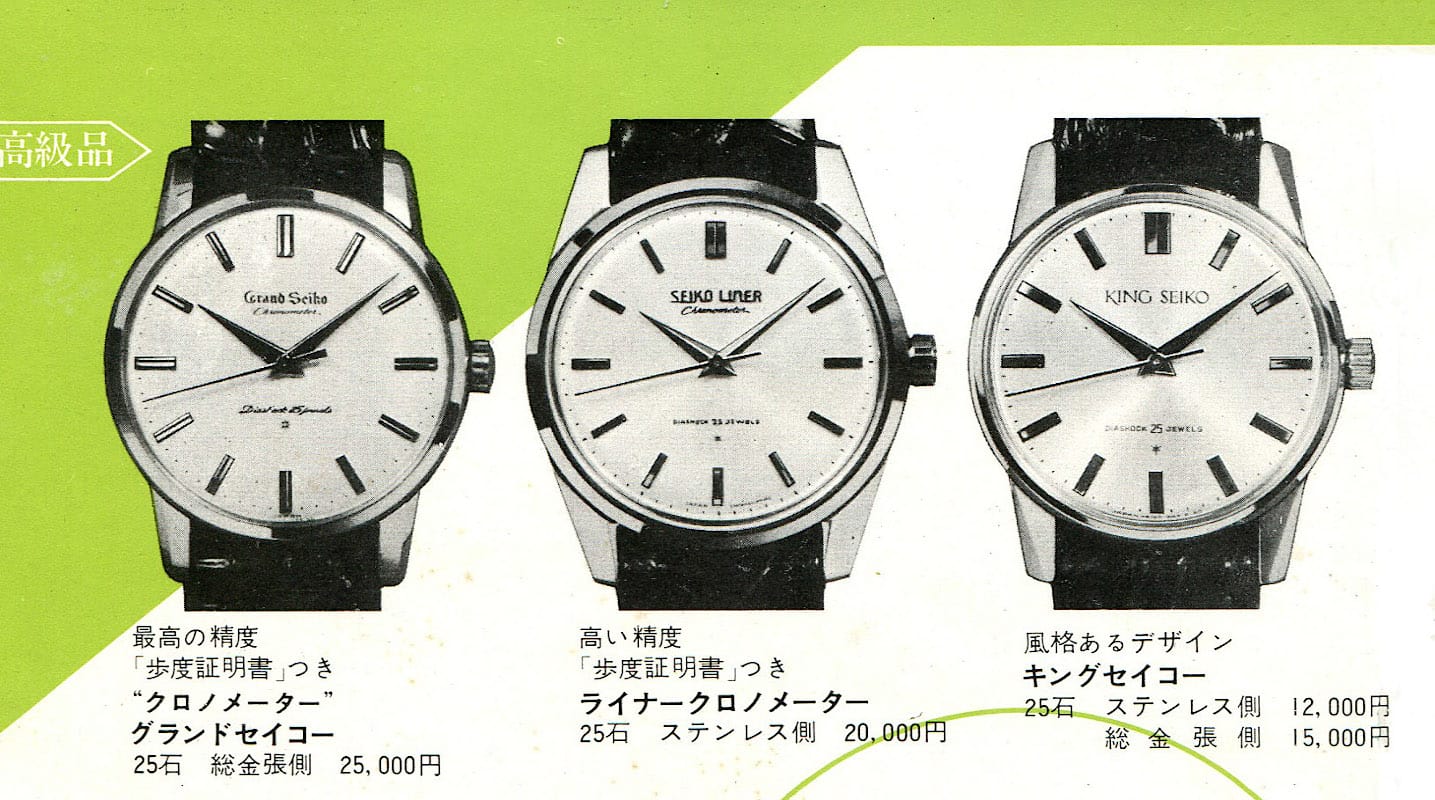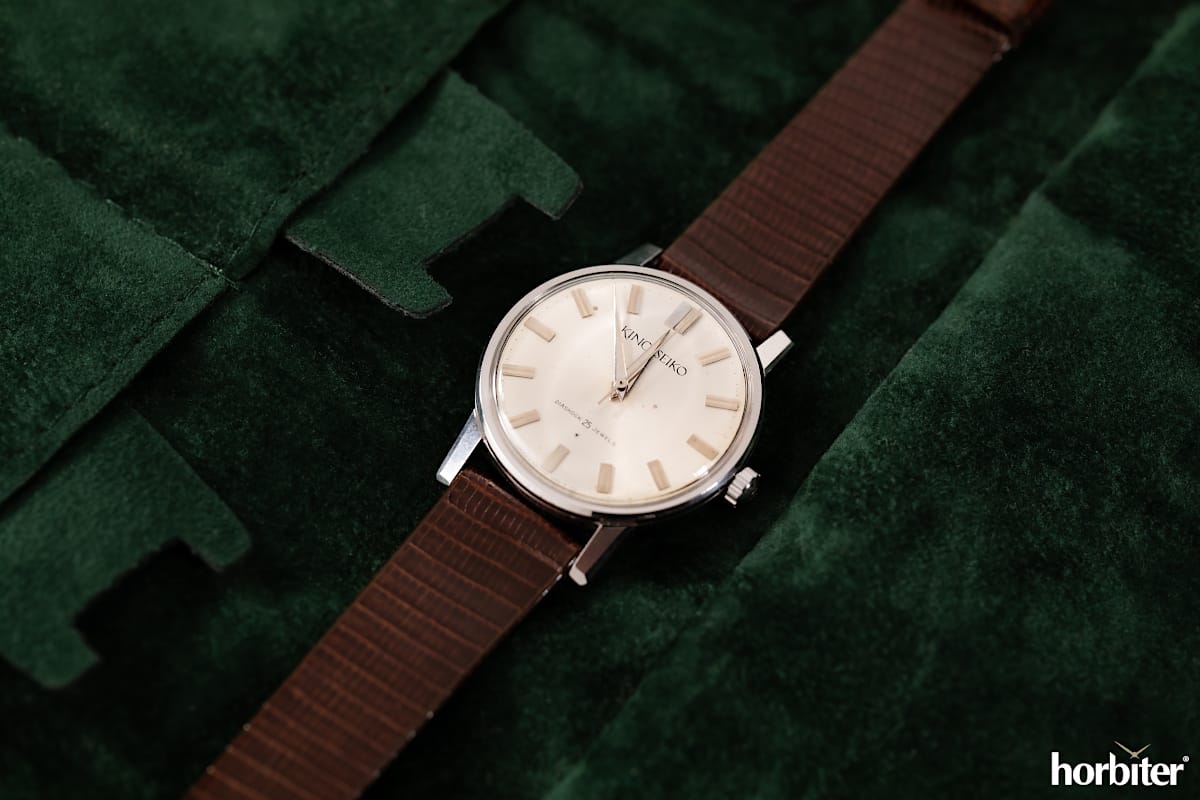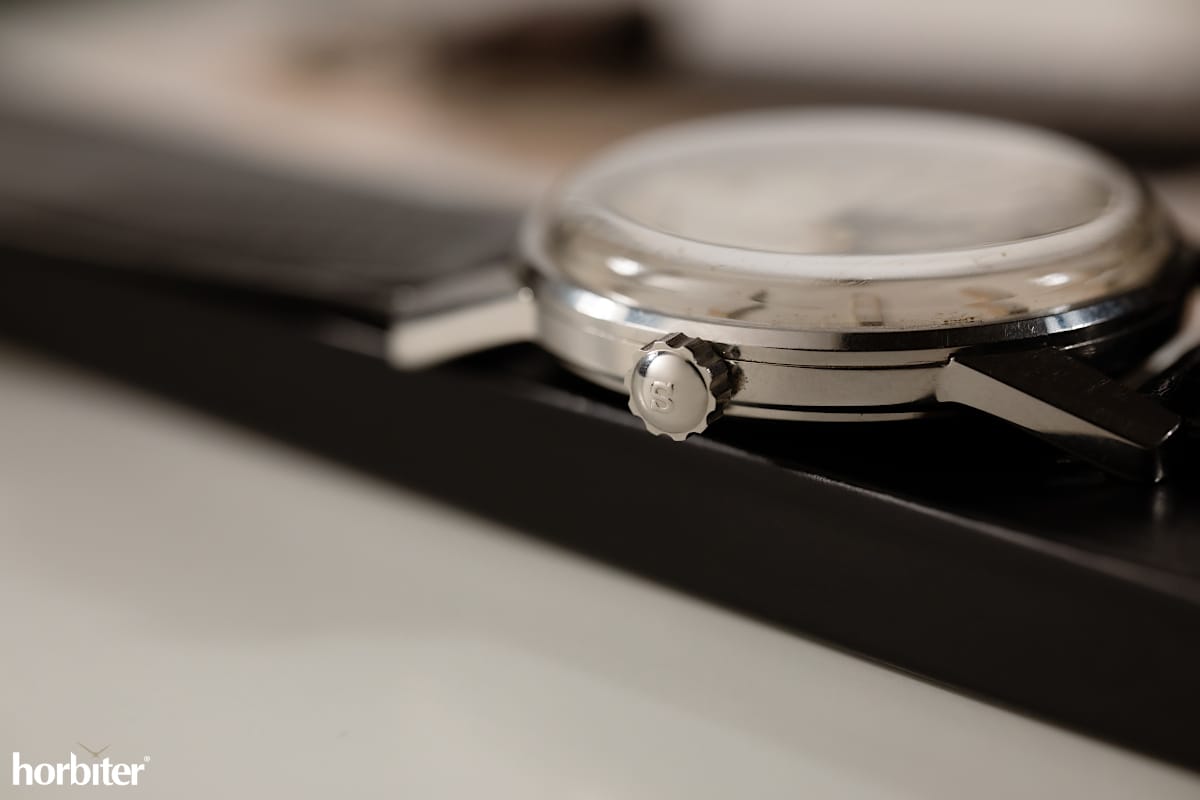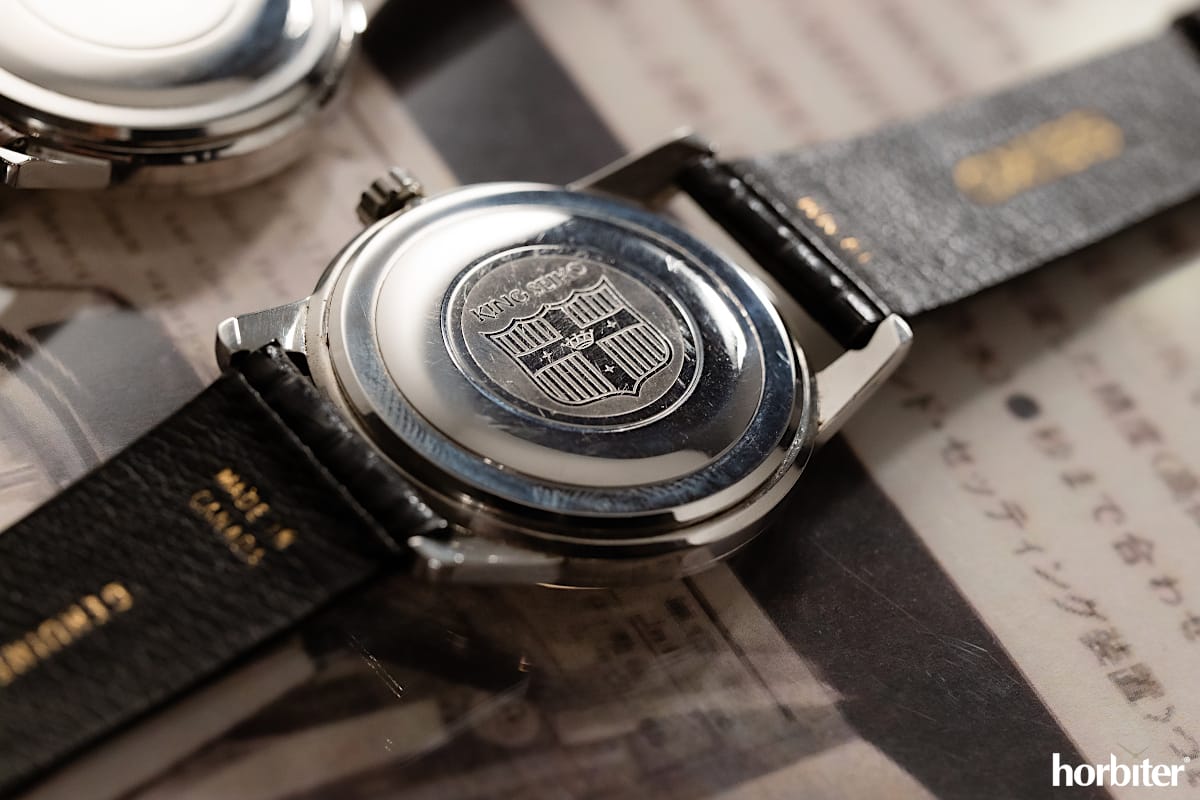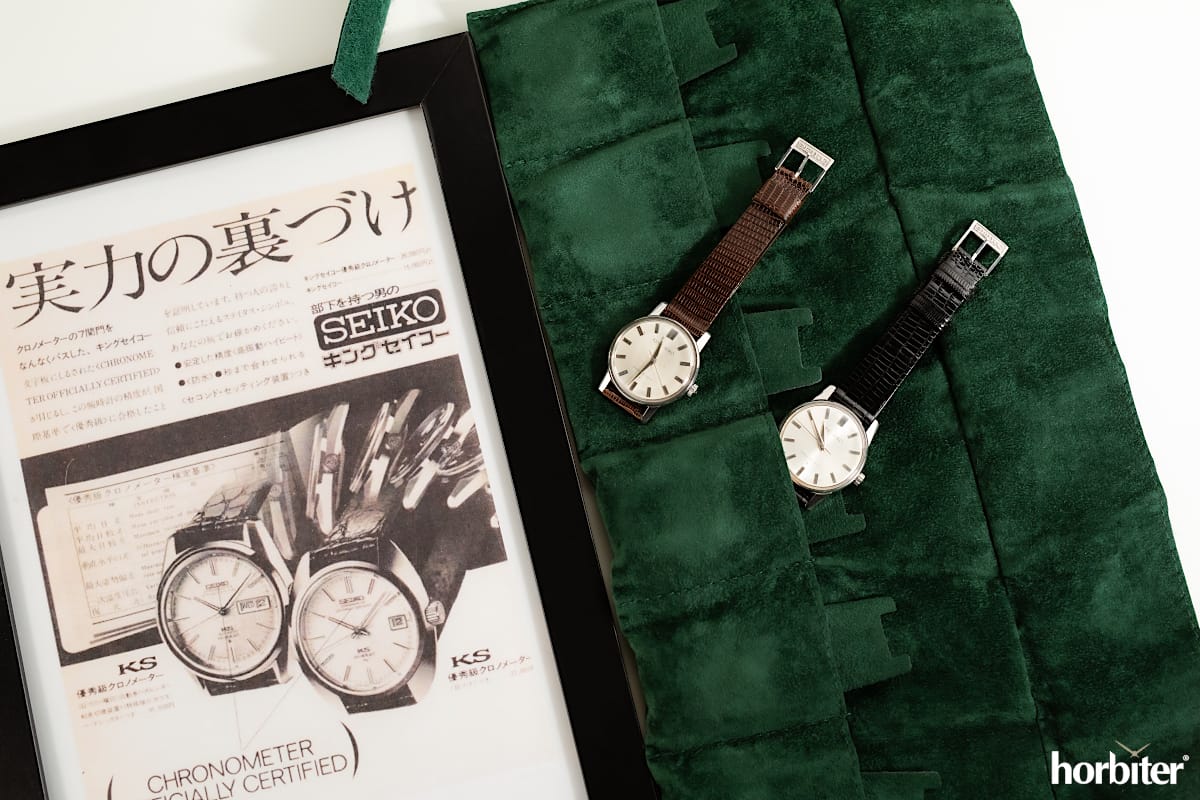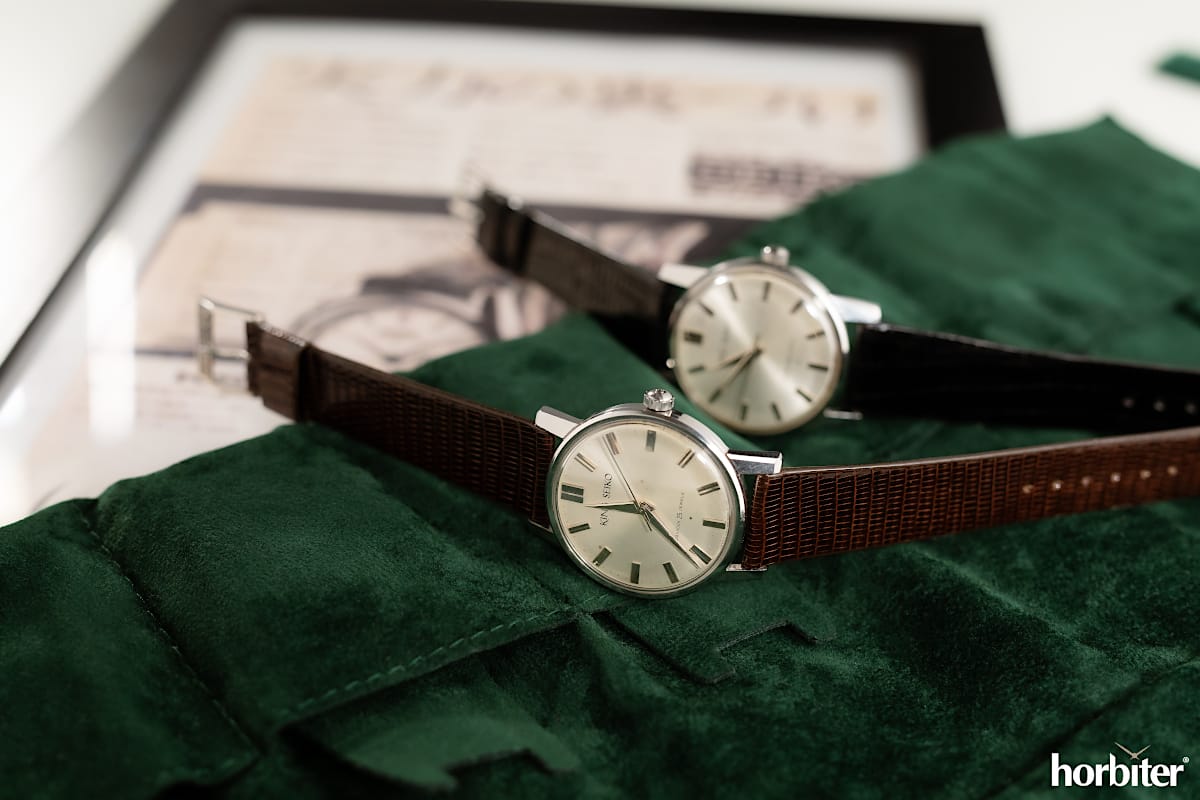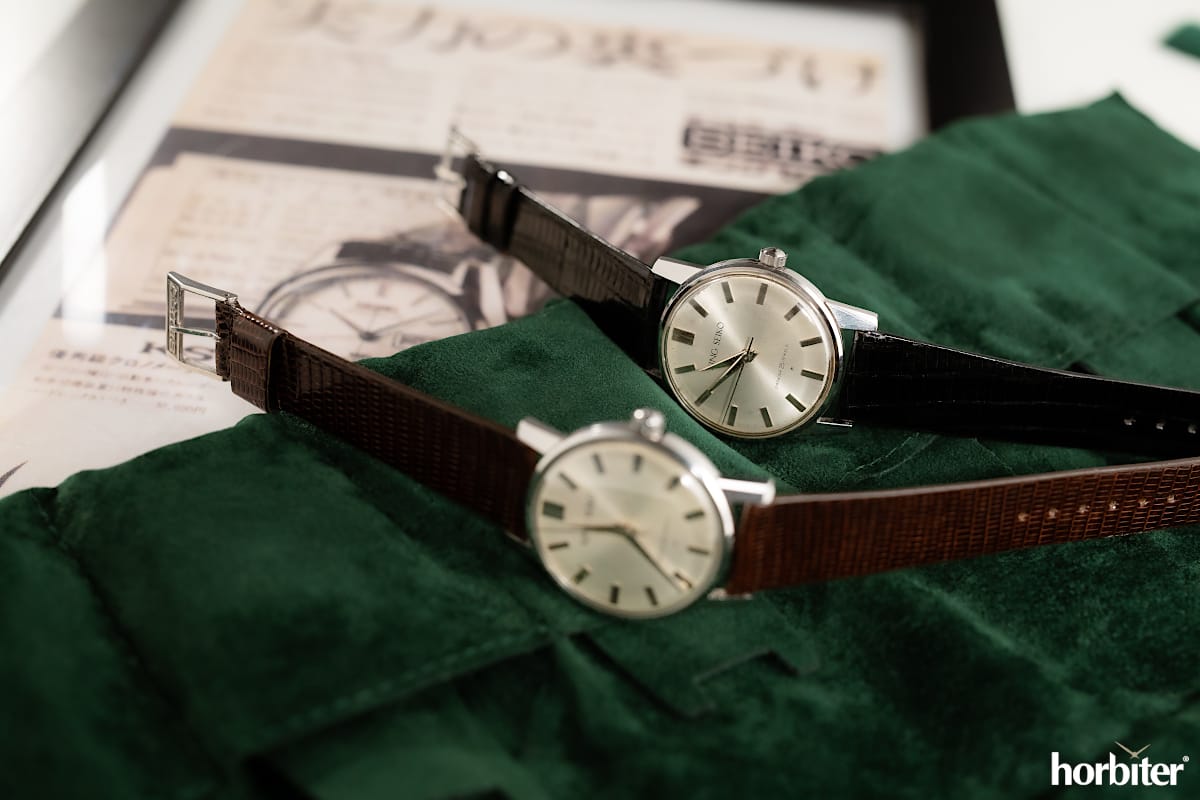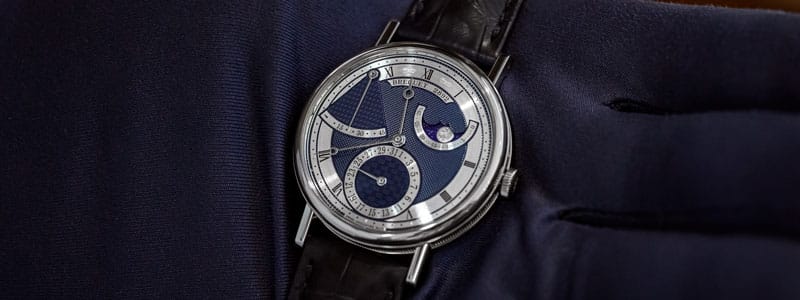Table of Contents
It all started with a quest for excellence.
In 1960, Suwa Seikosha unveiled their first Grand Seiko Chronometer, named “The First”; the GSJ 14070 equipped with the glorious calibre 3180. The calibre 3180 ensured a running accuracy within +12 and -3 seconds per day and a 45-hour maximum power reserve.
It was the first-ever Japanese wristwatch to meet the standards set by the Bureaux Officiels de Contrôle de la Marche des Montres. A year later, Daini Seikosha revealed their first high-end Seiko, the King Seiko. The latter was also acclaimed as “The First” by enthusiasts, despite not providing any “Chronometer” certification.
Back then, here is the story of the quest for excellence between two Seiko factories, whose common goal was to craft the best possible Japanese watch, either in performance and refinement. Once placed one alongside the other, both timepieces are closer to each other, much more than you’d expect.
From Seiko News n ° 39 – 1961
Pictured below is an excerpt from the 1961 Seiko News magazine, no. 39, announcing the launch of a new premium watch, the King Seiko. While both factories within Seiko Corp. aimed at engineering no other than the “perfect watch”, the King Seiko‘s mission was somewhat different, in that it offered premium luxury watch quality at a more affordable price point than its Grand Seiko sibling (photo credit: www.egalizer.hu).
Here is why you won’t find any date display or hacking on any first release or a chronometer certification, despite the tests carried out at the Kameido factory ensuring a close-to-chronometer standard.
An excerpt from the 1963 brochure showcasing either the Grand Seiko and the King Seiko “The First” proves how different the price point was (photo credit: Adventures in Amateur Watch Fettling).
Unlike the first GS, the first KS features a “flat”, not “convex” dial (it was the first-ever Seiko to adopt such design), the King Seiko naming is printed and less refined than the engraved one found on the GSJ 14070 instead (which turned to “Carved”, “Raised” and “Printed” along the way).
The dial is exclusively silvery and has a sunray finish, with the rarest Seiko Liner found on top-collectable pieces and came as an AD or SD variant. What do these acronyms stand for?
Applique Dial and Special Dial
AD and SD code two differently finished dials; AD stands for “Applique Dial”, while SD stands for “Special Dial” instead. The SD adopts solid 14k or 18k gold indexes (in white or yellow Gold if you opted for steel or Gold filled case, respectively), while the first outcome comes with rhodium-plated indexes (steel case) or Gold plated (Gold Filled cases). You can easily recognize each dial by the hallmark placed at six, i.e. a star with 6 or 8 points, respectively.
Designers drew clean and neat lines; the dial is broad, the lugs are straight and long while the indexes are faceted and finished to enhance depth and brightness; all these traits embody beauty according to Japanese standards.
The case is either available in gold (100 and 80 microns Gold Filled) or steel and, despite adopting special gaskets, it is all but watertight. The crown is pressure-fastened and houses the Seiko‘s “S” in relief while offering large and smooth grooves for a better grip.
The case back is pressure-fastened, too, and carries the legendary King Seiko‘s shield, although you might jump into two designs depending on the Gold or steel case. On the first one, the coat of arms is embossed out of an applied gold medallion; in the second case, it is lightly engraved on the steel base.
You won’t find any additional inscriptions; reference number, serial number and any other detailing are on the case’s inside, along with the first model’s distinctive trait, as represented by the “TSURU”, which stands for “Red-crowned Crane”, a mark of longevity and happiness.
Let me highlight that Tsuru was not exclusive to King Seiko but appeared on previous Seiko lines upon request by Yoshikawa Tsuru, an engineer who played a pivotal role in the development of Seiko after World War II.
The calibre is hand-wound, it beats at 18,000 vph, has 25 jewels, adopts a diashock device and has a 45-hour maximum power reserve. It also houses a fine adjustment system, yet it doesn’t hack as mentioned above. Let’s get straight to the point now; the first model came as a two-variant collection.
By adopting “The First” moniker, we’re, therefore, specifying not one but two King Seiko models, namely those coded as KSJ 14102 and KS 15034.
The KSJ 14102 appeared in August 1961 and was phased out towards the end of 1963; the KS 15034 was marketed in the autumn of 1962 and then discontinued in the late 1964‘s first half. Both models share the base specs sheet but slightly differ in case size, shape and index’s style.
They equally offered a leather strap with pin buckle showcasing the Seiko logo on top. Also, the pin buckle came in two options; the former was introduced in 1961 and has a slightly curved shape with the logo in Italics; the latter, manufactured between 1963 and 1968, has a more contemporary, squared-off design, with bold and in-capital-letters logo.
In either case, the buckle alone is a must-have for any vintage King Seiko “The First” and sells for over 100 euros.
The KSJ 14 has a round, slim case with straight, long lugs with a square profile. The King Seiko‘s eldest son’s design cues embody its high-end precursor’s, the Seiko Lord Marvel, measuring 35mm (37 with the crown) and offering a 42 mm lug-to-lug, while the gap between two lugs stops at 18 mm.
The dial houses “shokuji” applied indexes, whose central facet’s polishing adds to the watch’s brightness. At noon, the double applied baton index stands out. The KS 15 comes in at 35mm across (38, crown included) and a 43 mm lug-to-lug, with a 19 mm gap between the lugs.
The lugs here are much more tapered and showcase a more refined front facet; here are the first examples of what we will then regard as Taro Tanaka‘s signature “Grammar of design”. The KS 15‘s dial also comes with applied indexes and a two-part index at twelve.
Seiko: you never stop discovering
I hope you all enjoyed this story. When you explore the history of Seiko, you never stop discovering new stories, as it happened when I found myself coming across the competition between Suwa Seikosha and Daini Seikosha in the brand’s race to engineer no other than the perfect wristwatch.
The rivalry between King Seiko and Grand Seiko ended up with Seiko Corp. finally establishing Grand Seiko as the Group’s premium luxury brand, thus highlighting how paramount this competition was in raising the bar as a top-tier global watch manufacturer.
(Photo credit: Horbiter®)
Andrea Luddi @Horbiter®

